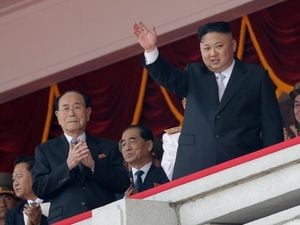As voters across the United States headed to the polls on November 4, 2025, the nation’s political landscape braced for a series of pivotal elections that could shape the future of Congress, statehouses, and city halls alike. From the sun-drenched precincts of California to the bustling streets of New York City, and across the bellwether battlegrounds of New Jersey and Virginia, four high-stakes races drew national attention, each offering a glimpse into the evolving priorities and anxieties of the American electorate.
Perhaps the most closely watched contest unfolded on the West Coast, where Californians weighed in on Proposition 50—a special redistricting ballot initiative with the potential to tip the balance of power in the U.S. House of Representatives. According to NPR, this measure, championed by Governor Gavin Newsom, aimed to replace the state’s current congressional lines with a new map favoring Democrats. The move was widely seen as a countermove to Republican-led states, such as Texas, which have redrawn their own maps to bolster GOP prospects ahead of the 2026 midterm elections.
If voters approved Proposition 50—a likely outcome, according to most analysts—the change could pave the way for Democrats to pick up as many as five additional House seats in the 2026, 2028, and 2030 elections. However, the proposition was crafted with a built-in expiration date: after the 2030 election, redistricting authority would revert to California’s independent citizens’ redistricting commission. Supporters argued that the measure was a necessary corrective to partisan gerrymandering elsewhere, while critics accused Newsom and state Democrats of abandoning the very principles of fair, nonpartisan line-drawing they once championed.
As polls closed and results trickled in, the implications of the vote were clear. The outcome would not only affect California’s own congressional delegation but could also reverberate nationally, potentially altering the partisan makeup of the House for years to come. “This is Governor Newsom’s answer to President Trump pushing Texas and other GOP-led states to redraw their congressional maps to give Republicans a better chance of hanging onto the party’s slim majority in the U.S. House,” reported NPR.
Meanwhile, on the opposite coast, New York City prepared to make history in its mayoral election. Zohran Mamdani—a 34-year-old self-described democratic socialist—emerged as the frontrunner after a stunning primary victory over former Governor Andrew Cuomo and nine other Democrats. Mamdani’s grassroots campaign, fueled by a relentless focus on affordability and social justice, galvanized younger voters and energized the city’s progressive base. If elected, he would become New York’s first Muslim mayor and its youngest in more than a century.
Yet the race was far from a coronation. Cuomo, refusing to exit the stage quietly, remained in contention as an independent. He did not mince words about his rival’s readiness for the job, repeatedly casting doubt on Mamdani’s experience and the feasibility of his ambitious platform. Cuomo charged, “His campaign platform, which includes free buses and universal childcare, can’t be delivered.” The contest became a proxy for broader ideological battles roiling the Democratic Party, with Mamdani’s rise celebrated by the left and seized upon by Republicans as a cautionary tale of urban radicalism.
Down the coast in New Jersey, the governor’s race was a nail-biter, with Democratic Rep. Mikie Sherrill holding a slim lead over Republican Jack Ciattarelli as Election Day drew to a close. Ciattarelli, a former small business owner, had narrowly lost the gubernatorial race four years prior and returned with renewed vigor, buoyed by public support from former President Donald Trump. Sherrill, a former Navy pilot, countered with high-profile endorsements of her own, including a rally with Barack Obama just days before voters cast their ballots.
The campaign was dominated by bread-and-butter issues—housing affordability and soaring electric bills topped voter concerns, according to polling cited by NPR. But personal attacks and negative advertising also colored the contest, reflecting the heightened polarization of American politics. Should Sherrill prevail, it would mark the first time since the 1960s that New Jersey voters elected a governor from the same party for three consecutive terms—a testament to the state’s shifting political winds and the durability of Democratic coalitions in the Garden State.
Further south, Virginia’s gubernatorial showdown offered its own historic possibilities. The race pitted Democrat Abigail Spanberger, a former member of Congress, against Republican Lt. Gov. Winsome Earle-Sears. Spanberger’s campaign hammered away at the rising cost of living and the Trump administration’s cuts to the federal workforce, seeking to rally voters anxious about their economic futures. Earle-Sears, meanwhile, ran on a platform of crime reduction, lower taxes, and a controversial pledge to ban transgender students from girls’ sports and bathrooms in public schools—a stance that drew both fervent support and fierce opposition.
Regardless of the outcome, Virginia was poised to make history: either Spanberger or Earle-Sears would become the state’s first female governor. A victory for Earle-Sears would also make her the first Black woman ever elected governor in the United States, a milestone that resonated far beyond Virginia’s borders. As Anna Moneymaker and Win McNamee of Getty Images documented, the candidates’ contrasting visions crystallized the cultural and political divides that have come to define contemporary American elections.
Throughout Election Day, voters in each of these contests faced a familiar blend of hope, anxiety, and uncertainty. In California, the debate over Proposition 50 reflected a broader national struggle over the rules of political competition and the meaning of fair representation. In New York, the mayoral race tested the limits of progressive ambition and the resilience of establishment politics. New Jersey’s gubernatorial battle underscored the enduring importance of local economic concerns, even as national figures like Trump and Obama loomed large. And in Virginia, the race was as much about breaking barriers as it was about policy differences—a reminder that history is often made at the ballot box in ways both expected and surprising.
As results continued to roll in late into the evening, one thing was certain: the outcomes of these four races would reverberate far beyond their immediate jurisdictions, shaping debates over redistricting, ideology, and identity for years to come. The nation watched, waited, and wondered what new chapters these elections would write in the ever-evolving story of American democracy.




